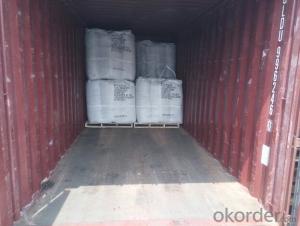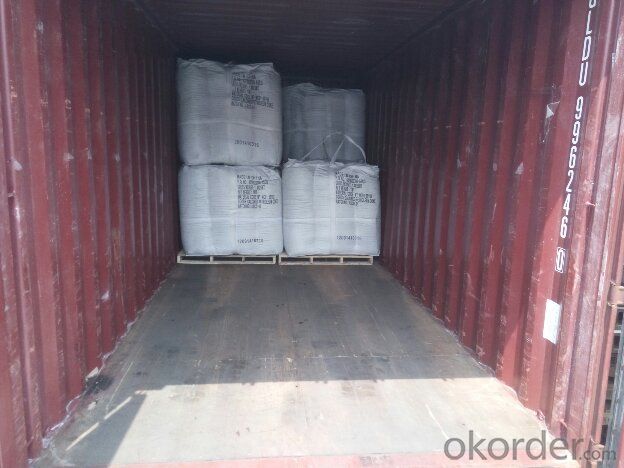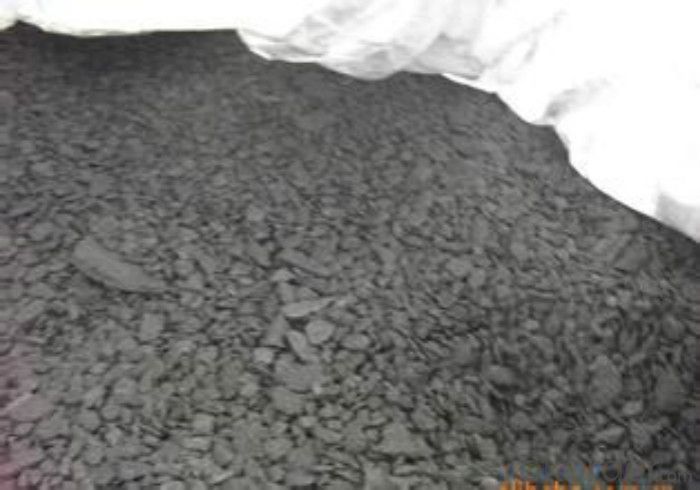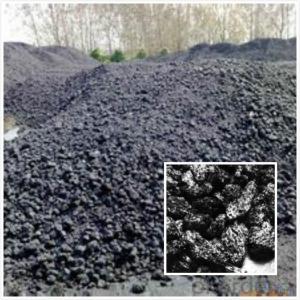Calcined Petroleum Coke with VM 0.8%max
- Loading Port:
- Shanghai
- Payment Terms:
- TT OR LC
- Min Order Qty:
- 19.9
- Supply Capability:
- 1009 m.t./month
OKorder Service Pledge
OKorder Financial Service
You Might Also Like
Intrduction
Carbon additive to ningxia production of anthracite as raw material, after washing, crushing, high temperature calcination, filter, etc. Craft refined and become.This is after the anthracite calcination generated high carbon content and low volatile component of the new product, is an ideal raw material to make steel.
Calcined Petroleum Coke comes from delayed coke which extracted from oil refinery. Although Calcined Petroleum Coke contains a little bit higher level of sulfur and nitrogen than pitch coke, the price advantage still makes it widely used during steel-making and founding as a kind of carbon additive/carburant.
Features
In the smelting process for reducing agent. Performance: replace the traditional oil carbon additive, decrease the cost of steelmaking. Features: low ash. low sulfur,low phosphorus, high calorific value. High ratio resistance,high mechanical strength,high chemistry activity. It is mainly used for metallurgy reductant inoculants, casting, refractory materials, machinery, electronics and other fields.
1) high absorption rate, it can be absorbed up to 90%.
2) absorbed more quickly than other carbon additive; no residue remains in furnace.Good quality
3) low Sulfur, the lowest can reach below 0.20%; low nitrogen, normally below 200ppm (0.02%). Steady Supply
Specifications
CPC | |||
F.C.% | 98.5MIN | 98.5MIN | 98MIN |
ASH % | 0.8MAX | 0.8MAX | 1MAX |
V.M.% | 0.7 MAX | 0.7 MAX | 1 MAX |
SULFUR % | 0. 5MAX | 0. 7MAX | 1MAX |
MOISTURE % | 0.5MAX | 0.5MAX | 1MAX |
Pictures
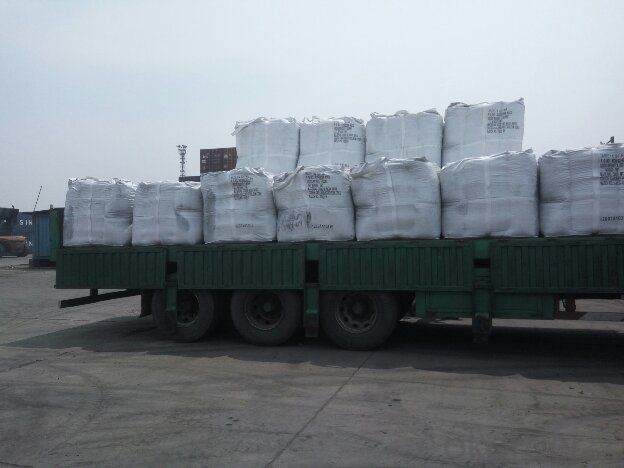
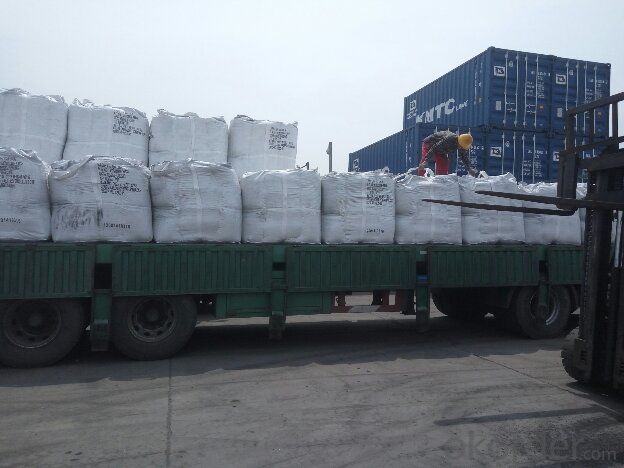
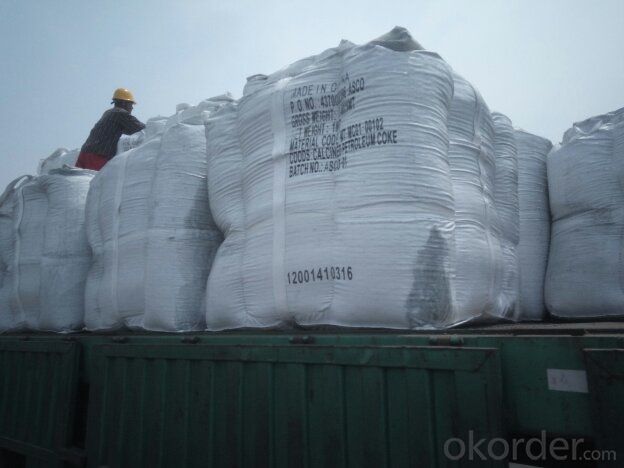

FAQ:
(1)CPC could be as fuel
Petroleum coke is a material relatively low in cost and high in heat value and carbon content with good chemical stability, making it an efficient and costeffective fuel for producing metal, brick and related products.
(2)CPC could be as Graphite Electrodes
Graphite can be produced from lowsulfur needle petroleum coke, which must be heated above 5,432 degrees Fahrenheit.
(3)CPC could be as Anodes
Calcined petroleum coke, often low in sulfur and metallic impurities, is used to make anodes for
the smelting industry.Calcined petroleum coke is mixed with coal tar pitch in the production of
anodes.
- Q: What are carbon nanotubes?
- Carbon nanotubes are cylindrical structures made entirely of carbon atoms arranged in a unique way. They have a diameter of only a few nanometers, hence the name "nanotubes". These tubes can be incredibly long, with lengths that can reach up to several centimeters. Carbon nanotubes possess extraordinary properties due to their unique structure. They are incredibly strong and have excellent mechanical properties, being about 100 times stronger than steel at one-sixth of the weight. Additionally, they have exceptional thermal and electrical conductivity. These nanotubes can be categorized into two main types: single-walled carbon nanotubes (SWCNTs) and multi-walled carbon nanotubes (MWCNTs). The single-walled nanotubes consist of a single layer of carbon atoms rolled into a tube, while multi-walled nanotubes consist of multiple layers of these tubes nested within each other. Carbon nanotubes find applications in various fields due to their exceptional properties. In electronics, they are used as transistors and interconnects due to their high electrical conductivity. They are also utilized in energy storage devices, such as batteries and supercapacitors, due to their high surface area and high electrical conductivity. In materials science, carbon nanotubes are used to reinforce composites, making them stronger and lighter. They also have potential applications in medicine, as drug delivery systems and as imaging agents. Research is ongoing to further understand and harness the potential of carbon nanotubes. However, challenges remain in terms of their large-scale production, cost-effectiveness, and potential health and environmental concerns. Overall, carbon nanotubes represent an exciting and promising area of nanotechnology with vast potential for advancements in various fields.
- Q: What are the advantages of carbon-based solar cells?
- There are several advantages of carbon-based solar cells that make them a promising technology for renewable energy production. Firstly, carbon-based solar cells are lightweight and flexible, which makes them highly versatile in terms of deployment options. They can be integrated into various surfaces, such as building facades, windows, or even clothing, expanding the possibilities for solar energy generation. Secondly, carbon-based solar cells have a low environmental impact compared to traditional silicon-based solar cells. The production process of carbon-based solar cells usually involves less energy consumption and fewer toxic materials, reducing the overall carbon footprint of the technology. Additionally, carbon-based solar cells have a shorter energy payback time, meaning they reach the point of generating more energy than it takes to produce them faster than silicon-based solar cells. Another advantage of carbon-based solar cells is their potential for low-cost manufacturing. Carbon-based materials, such as organic polymers or perovskites, can be produced through cost-effective techniques like solution processing or printing methods. This scalability and affordability make carbon-based solar cells an attractive option for large-scale deployment, which can help accelerate the global adoption of solar energy. Furthermore, carbon-based solar cells have the potential for improved performance in low-light conditions. Due to their unique properties, such as the ability to absorb a broader range of light wavelengths, they can generate electricity even in cloudy or indoor environments. This makes carbon-based solar cells suitable for a wider range of applications, including indoor electronics, wearable devices, or even integration into urban infrastructure. Lastly, the biodegradability of some carbon-based materials used in solar cells makes them more environmentally friendly. As the world moves towards a circular economy and strives for sustainable solutions, the ability to recycle or dispose of solar cells without causing harm to the environment becomes increasingly important. In summary, carbon-based solar cells offer advantages such as flexibility, low environmental impact, low-cost manufacturing, improved performance in low-light conditions, and biodegradability. These advantages make them a promising technology for realizing a sustainable and widely accessible solar energy future.
- Q: How does carbon impact the prevalence of droughts?
- Carbon impacts the prevalence of droughts by contributing to climate change. Increased levels of carbon dioxide in the atmosphere trap heat and lead to rising global temperatures. This enhanced greenhouse effect alters weather patterns and increases the frequency and severity of droughts in many regions around the world.
- Q: Often see the so-called 30T, 46T, 60T carbon fiber, 60T carbon fiber, equivalent to T hundreds of carbon fibers, is T800, or T1000? I'm not very good at parameter conversion. Is there a parameter list? How do I correspond to the T300T700T800 performance parameter table?
- One, 60T carbon fiber and T hundreds of carbon fiber does not have any corresponding, 60T belongs to M series (high modulus carbon fiber). Only 30T corresponds to T800.
- Q: What are the challenges of carbon capture and storage technology?
- One of the main challenges of carbon capture and storage technology is the high cost involved in implementing and maintaining the infrastructure. The capturing and storing of carbon dioxide emissions requires significant investment in equipment and facilities, making it financially burdensome for many industries. Additionally, the process of capturing carbon dioxide from flue gases can consume a considerable amount of energy, resulting in increased operational costs. Another challenge is the limited capacity for storing captured carbon dioxide. Finding suitable geological formations or reservoirs to safely store large quantities of carbon dioxide is a complex and time-consuming task. It requires thorough geological assessments and monitoring to ensure that the stored carbon dioxide will not leak back into the atmosphere or pose any environmental risks. Moreover, the transportation of captured carbon dioxide to storage sites can also be a logistical challenge. Developing a robust and efficient transportation infrastructure to move carbon dioxide from various emission sources to storage locations is crucial but can be difficult, especially in areas with limited existing infrastructure. Furthermore, there are concerns about the long-term security and permanence of stored carbon dioxide. It is essential to ensure that the stored carbon dioxide remains trapped underground indefinitely to prevent its release into the atmosphere. This requires continuous monitoring and verification processes to guarantee the integrity of the storage sites over extended periods. Lastly, public acceptance and regulatory frameworks pose significant challenges for carbon capture and storage technology. There may be public concerns about the safety and potential environmental impacts of storing large amounts of carbon dioxide underground. Establishing clear regulations and guidelines, as well as effective communication and public engagement, are essential to address these concerns and build trust in the technology.
- Q: How do plants use carbon dioxide?
- Plants use carbon dioxide through a process called photosynthesis, where they absorb CO2 from the atmosphere through tiny openings in their leaves called stomata. Carbon dioxide is converted into glucose and oxygen using sunlight energy during photosynthesis. The glucose is used as a source of energy for the plant and is also stored as starch for future use.
- Q: What does carbon nanotubes (5,5) in (5,5) mean?
- 1. will be assumed as the corresponding nanotube (cut after) / graphene planar monolayer of carbon atoms (Figure 1)For hexagonal packing, marking the best method for the definition of the two unit vector (unit vector), the A1 and A2 arrow.A1 and A2 interval is 60 degrees.2. (5,5) refers to 5<a1>+5<a2>, (note that is a vector addition) more widely expressed as:(m, n) = m*<a1> + n*<a2>;
- Q: What are the consequences of increased carbon emissions on social inequality?
- Social inequality is profoundly affected by the increase in carbon emissions. The main consequence is the worsening of existing inequalities, especially in disadvantaged communities. Firstly, marginalized communities, including low-income neighborhoods and developing countries, are disproportionately affected by the effects of climate change caused by carbon emissions. These communities often lack the necessary resources and infrastructure to withstand extreme weather events like hurricanes or flooding, which makes them more vulnerable and leads to loss of livelihoods. Secondly, the economic impact of carbon emissions, such as higher energy costs and reduced agricultural productivity, widens the gap between the rich and the poor. Wealthy individuals can adapt to these changes, while those with limited financial resources struggle to cope, resulting in increased poverty and socio-economic disparities. Furthermore, carbon emissions contribute to health disparities. Low-income neighborhoods, where industrial plants and highways are often located, are disproportionately affected by polluted air caused by carbon emissions. This leads to higher rates of respiratory diseases and other health issues in marginalized communities, exacerbating existing health inequalities. Moreover, the consequences of climate change, driven by carbon emissions, can force communities to relocate, resulting in social disruption and increased competition for resources. This further marginalizes vulnerable populations and creates conflicts over land and resource access. Lastly, the consequences of carbon emissions on social inequality are not limited to specific regions but have global implications. Developing countries, which contribute less to carbon emissions but bear a disproportionate burden of the impacts, face significant challenges in addressing climate change due to limited resources and technological capabilities. This perpetuates global inequalities. In conclusion, the increase in carbon emissions has severe consequences for social inequality. It amplifies existing disparities, particularly affecting marginalized communities, through the disproportionate impacts of climate change, economic hardships, health disparities, forced displacement, and global inequalities. Addressing carbon emissions and climate change is essential not only for environmental sustainability but also for promoting social justice and reducing social inequality.
- Q: What is the impact of carbon emissions on agriculture?
- Agriculture is significantly impacted by carbon emissions, with effects seen in both crop production and livestock farming. The primary consequence of increased carbon emissions is climate change, which has the ability to change weather patterns and temperatures. These alterations can disrupt the delicate balance necessary for successful agriculture. The rising temperatures caused by carbon emissions result in increased evaporation, which can diminish soil moisture and hinder crop growth. This leads to more frequent and severe droughts, causing water scarcity and reduced crop yields. Moreover, extreme weather events like floods, storms, and hurricanes become more common, causing extensive damage to crops and farmland. Another outcome of carbon emissions is the modification of atmospheric composition. Elevated levels of carbon dioxide (CO2) stimulate the growth of specific weeds and invasive species, which compete with crops for vital resources such as sunlight, water, and nutrients. This competition ultimately results in decreased crop yields and lower-quality produce. Furthermore, carbon emissions contribute to air pollution, including the formation of ozone. High levels of ozone can harm plant tissues and limit photosynthesis, thus reducing crop productivity. Livestock health is also negatively affected by ozone, leading to decreased growth rates and milk production. The impact of carbon emissions on agriculture extends beyond crop production to livestock farming. Changes in climate and temperature can adversely affect animal health and productivity. Heat stress becomes a significant issue, resulting in reduced fertility, lower milk yields, and increased vulnerability to diseases. Additionally, livestock require sufficient access to water and nutritious feed, which can become scarce due to droughts and heightened competition for resources. In conclusion, carbon emissions have a detrimental impact on agriculture, affecting both crop production and livestock farming. Climate change, altered weather patterns, and increased competition for resources all contribute to reduced yields, lower-quality produce, and decreased livestock productivity. It is crucial to address and mitigate carbon emissions to ensure the sustainability and resilience of the agricultural sector in the face of these challenges.
- Q: How does carbon affect the pH of water?
- The pH of water can be affected by carbon due to the process of carbonation. When water dissolves carbon dioxide (CO2), it undergoes a reaction with the water molecules to create carbonic acid (H2CO3). As a result, the concentration of hydrogen ions (H+) in the water increases, causing a decrease in pH. Consequently, water becomes more acidic when carbonated. Furthermore, carbonic acid can further break down into bicarbonate ions (HCO3-) and hydrogen ions (H+), which also contribute to the rise in acidity. It is worth noting that the impact of carbonation on pH is contingent upon the concentration of carbon dioxide present in the water.
Send your message to us
Calcined Petroleum Coke with VM 0.8%max
- Loading Port:
- Shanghai
- Payment Terms:
- TT OR LC
- Min Order Qty:
- 19.9
- Supply Capability:
- 1009 m.t./month
OKorder Service Pledge
OKorder Financial Service
Similar products
Hot products
Hot Searches
Related keywords
